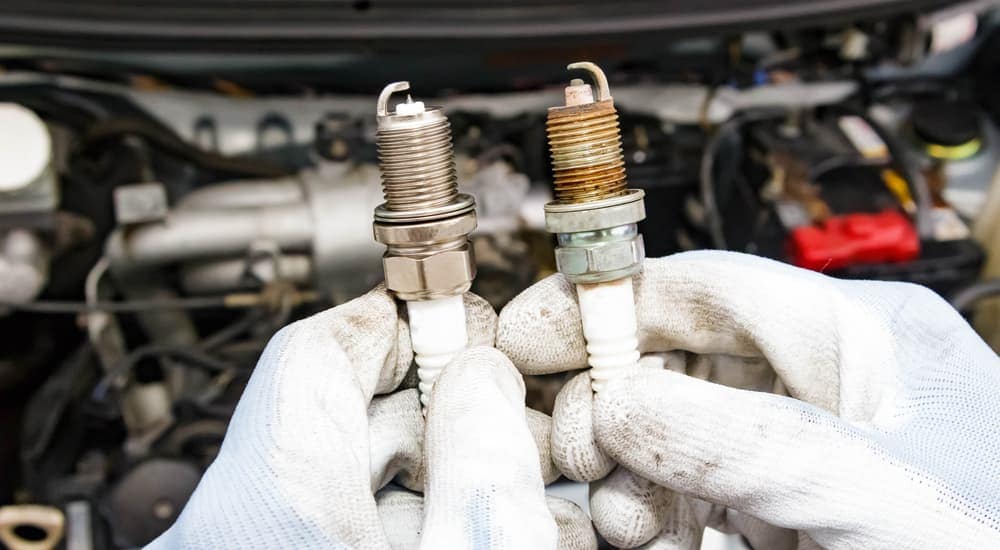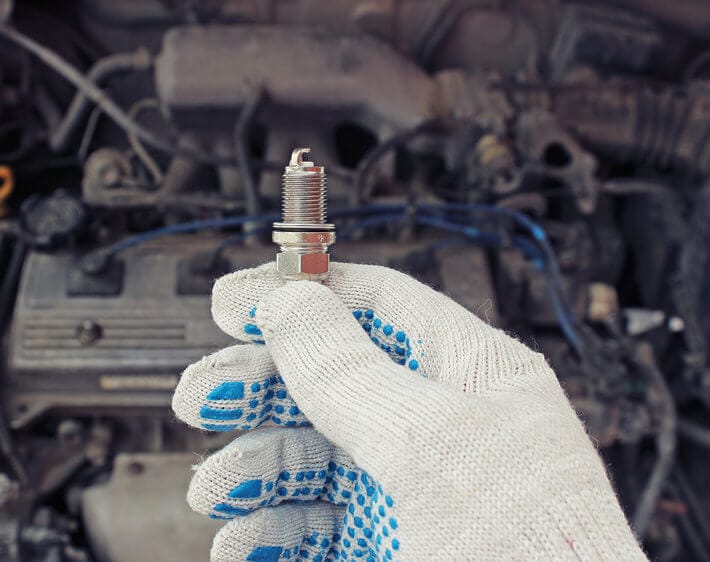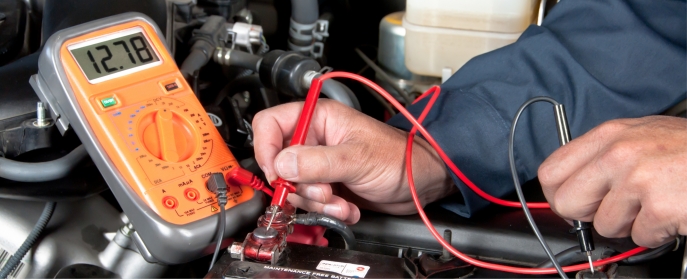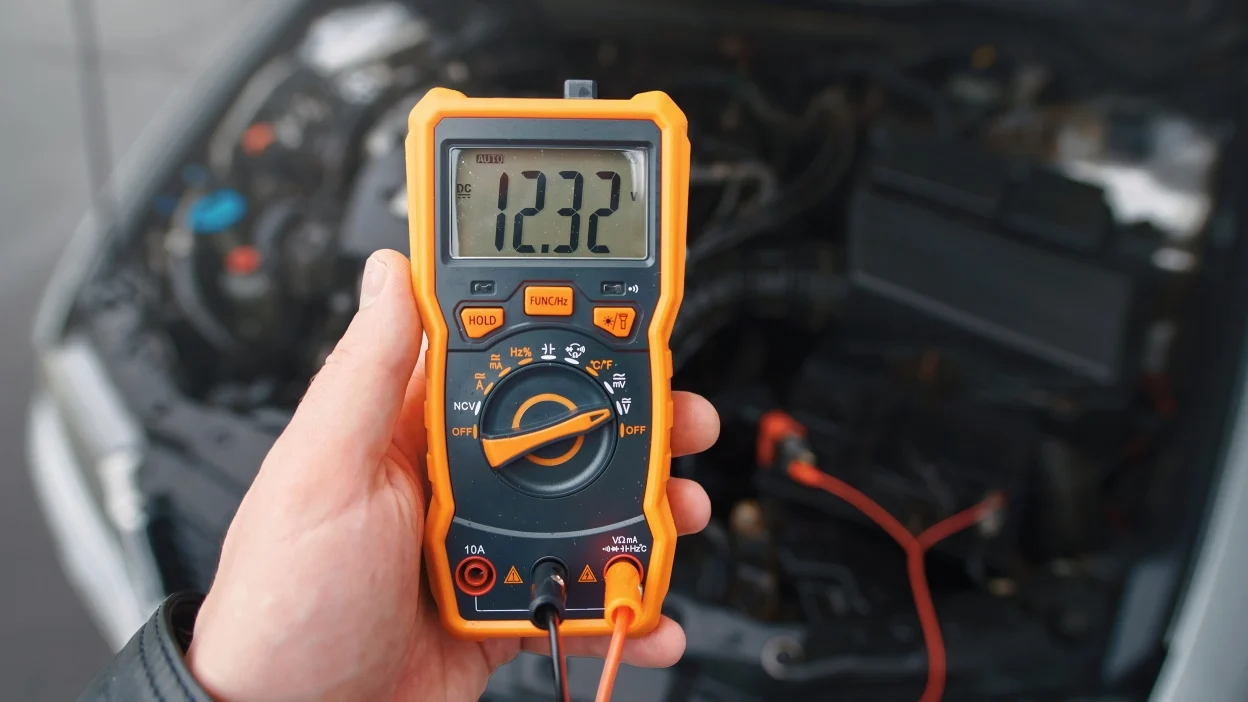To reset the check engine light after changing spark plugs, you can either use an OBD-II scanner or disconnect the battery. Before taking any action, consult your vehicle’s owner manual for specific instructions.
Understanding how to address the check engine light is critical for maintaining your vehicle’s performance and health. Spark plugs are a vital component in your car’s engine, as they provide the necessary spark to ignite the air-fuel mixture in the combustion chamber.
However, even a routine maintenance task like changing spark plugs can occasionally leave drivers with a lingering check engine light on their dashboard. This indicator can be worrisome, but often, the solution is a simple reset. A check engine light might stay illuminated if the engine’s computer has stored a code from an issue before the spark plugs were replaced, or it might be an unrelated issue that happened to arise at the same time.
Acting swiftly to reset the light is integral to confirm that no additional problems are present and ensure a smooth drive. To perform this task without any hitches, keep the process straightforward and efficient.
Importance Of Resetting Check Engine Light
Resetting the check engine light after changing your spark plugs is an essential step in general car maintenance. Not only does it help ensure that your vehicle’s engine is running smoothly, but it also verifies that the issue that triggered the light has been resolved. Post-maintenance, a reset gives you a clean slate to monitor for any future engine problems that may arise, facilitating proactive care for your car.
Significance Of Clear Dashboard Indicators
A clear and functional dashboard is pivotal for a hassle-free driving experience. Here’s why keeping your dashboard indicators, especially the check engine light, in check is crucial:
- Accurate Alerts: A reset check engine light will accurately reflect your car’s current state and allow you to trust the alerts it gives.
- Safety Precautions: Ensuring dashboard lights are functioning properly helps identify new issues quickly, contributing to your safety on the road.
- Vehicle Performance: A clear dashboard indicates good vehicle health and performance, helping to maintain its value and longevity.
Implications Of Ignoring The Check Engine Light
Turning a blind eye to your check engine light can have adverse effects on your car. Here are some potential implications of ignoring this crucial warning sign:
- Undiagnosed Issues: What seems like a minor problem could escalate into a more significant issue, leading to costly repairs.
- Compromised Functionality: Ignoring the light may mean you’re unaware of an existing condition that could impair your car’s performance.
- Decreased Fuel Efficiency: Engine issues that cause the check engine light to illuminate can also lead to reduced fuel economy.
Diagnosing The Check Engine Light
Updating spark plugs can trigger a check engine warning if not reset correctly. Discover the straightforward steps to reset the check engine light after a spark plug change, ensuring your vehicle runs smoothly and error-free.
Understanding Common Reasons For Check Engine Light Activation
- Faulty oxygen sensor
- Loose gas cap
- Catalytic converter failure
- Malfunction in the ignition system
- Exhaust gas recirculation valve issue
Verifying The Triggers After Spark Plug Replacement
Once you’ve replaced your spark plugs, it’s essential to ensure that they’re not the reason for a persistent check engine light:
- Inspect each spark plug for proper installation.
- Check that all ignition wires are securely connected.
- Use an OBD-II diagnostic scanner to see if any codes were triggered during the installation process.
Resetting The Check Engine Light
Finishing up with spark plug replacement might leave you with a lingering concern if the Check Engine light remains illuminated on your dashboard. The Check Engine light, or malfunction indicator lamp, is a signal from the car’s engine computer that something is wrong.
Often, changing spark plugs can resolve the issue that triggered the light, but resetting it is a necessary step to confirm the problem is fixed. This section will guide you through the process of resetting the Check Engine light after you’ve changed the spark plugs, ensuring everything is back to optimal running condition.
Step-by-step Guide To Resetting The Light Post-spark Plug Replacement
- Ensure Engine is Cooled: Wait for the engine to cool down fully before beginning the reset procedure.
- Locate the OBD-II Port: Find your vehicle’s On-Board Diagnostics (OBD-II) port, often under the dashboard near the steering column.
- Use a Code Scanner: Connect a code scanner to the OBD-II port and follow the scanner’s instructions to clear any codes.
- Disconnect Battery: Alternatively, with the engine off, disconnect the car battery, usually removing the negative cable for a few minutes.
- Reconnect Battery and Start Engine: Reattach the negative battery cable and start the car. The Check Engine light should be cleared.
- Check for Light: Monitor the dashboard to ensure the Check Engine light does not return, indicating a successful reset.
- Drive Your Vehicle: Sometimes, the car’s computer system needs to go through a ‘drive cycle’ to reset. Drive for about 10-15 miles.
Common Methods And Precautions For Successful Reset
- OBD-II Scanner: Most reliable method for resetting the light by clearing codes. Always follow the manufacturer’s guidelines for use.
- Battery Disconnect: A traditional method that typically involves a waiting period after disconnecting the battery to ensure a reset.
- Fuse Removal: For some vehicles, removing the ECU fuse for a minute can reset the Check Engine light.
- Key Cycle: Certain cars reset the light by turning the key to the on position, without starting the engine, waiting, and then turning it off.
- Precautions: Use gloves and safety glasses if disconnecting the battery and ensure you do not store codes or settings requiring a dealership reset.
Troubleshooting Persistent Check Engine Light
Resetting your car’s check engine light after replacing spark plugs might seem daunting, but it’s a straightforward process. Disconnecting the battery for a short period typically erases error codes and extinguishes the pesky dashboard warning. For a persistent light, a diagnostic scan tool might be required.
Addressing Persistent Light Issues Post-spark Plug Replacement
- Ensure all spark plug wires are firmly connected.
- Double-check the tightness of the spark plugs.
- Disconnect and reconnect the battery to reset the engine control module.
- If the light persists, use an OBD-II scanner to read the trouble codes for further diagnosis.
Identifying Underlying Causes For Unresolved Check Engine Light
If your check engine light stays on after the above steps, there could be other issues at play. Consider the following possibilities:
- Faulty ignition coils: These are critical for spark generation and could be the culprit.
- Clogged fuel injectors: Poor fuel delivery can lead to engine misfires and trigger the light.
- Exhaust emissions issues: Problems with the oxygen sensor or catalytic converter can cause the light to come on.
- Vacuum leaks: Leaks in the vacuum system can disrupt the air-fuel balance, resulting in the persistent light.
- Electrical issues: Any loose or faulty wiring can lead to engine sensors sending incorrect signals.
Final Tips And Considerations
Ensure all connections are secure after changing spark plugs to prevent the check engine light from re-illuminating. Disconnecting the battery for a short period can reset the light; otherwise, an OBD-II scanner provides a more precise reset.
Ensuring Long-term Effectiveness Of Spark Plug Replacement
To keep your engine performing at its best after swapping out spark plugs, remember the following:
- Check installation: Confirm that your new spark plugs are correctly installed, with the right torque specifications.
- Examine for damages: Inspect the spark plug cables for any sign of wear or damage; replace if necessary.
- Use quality parts: Opt for high-quality spark plugs to avoid frequent replacements and ensure optimal engine performance.
- Follow maintenance schedule: Adhere to your vehicle’s maintenance schedule for future spark plug changes and engine check-ups.
Additional Measures To Maintain Engine Health And Prevent Future Light Activation
Aside from taking care of the spark plugs, here are more ways to keep your engine in top condition:
- Regular oil changes: Keep up with regular oil changes to lubricate engine parts and prevent buildup.
- Air filter replacement: Replace your air filter regularly to prevent clogs that can affect engine performance.
- Fueling habits: Use the correct grade of fuel as recommended by your vehicle manufacturer.
- OBD-II scanner: Invest in an OBD-II scanner to quickly identify and address any future engine codes.

Credit: www.mccluskeychevrolet.com
Frequently Asked Questions For How To Reset Check Engine Light After Changing Spark Plugs
How Long Does It Take For Check Engine Light To Go Off After Changing Sparkplugs?
The check engine light typically resets within 10 to 20 miles of driving after changing spark plugs if the issue is resolved. For some vehicles, it may require a manual reset.
Do You Need To Reset Anything After Changing Spark Plugs?
No, you don’t need to reset anything after changing spark plugs if done correctly.
Why Is My Check Engine Light Blinking After Changing Spark Plugs?
Your check engine light may be blinking after changing spark plugs due to improper installation or a disconnected wire. Ensure all spark plugs are correctly seated and wires are secure.
How Do I Reset My Check Engine Light Manually?
To reset your check engine light manually, follow these steps: Turn off your vehicle’s ignition. Disconnect the negative battery cable for about 15 minutes. Reconnect the cable and start the engine. The light should reset. If it persists, consult a mechanic for further diagnosis.
Conclusion
Resetting your check engine light after a spark plug change is straightforward with the right steps. This guide provided clear instructions to get the job done effortlessly. Remember, a functioning engine light is crucial for optimal vehicle health. If issues persist, consult a professional.
Stay informed and ensure a safe drive every time.





Leave a Reply